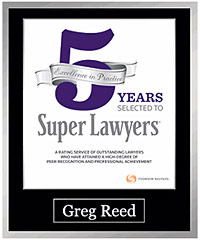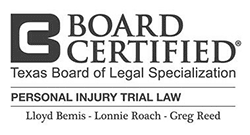Brain Aneurysms and Qualifying for Social Security Disability Benefits
Can I get disability benefits if I am suffering from the effects of a brain aneurysm?
Author: Attorney Lloyd Bemis
Approximately 30,000 people in the United States suffer from a brain aneurysm each year. Most brain aneurysms are small; 50-80% do not rupture and in many cases a person may not even know they have a brain aneurysm. In cases of ruptured brain aneurysms, 50% are fatal and 66% of those who survive suffer permanent neurological damage. Though brain aneurysms are most prevalent in people over the age of 40, they can occur in children. If you are suffering from the effects of a brain aneurysm you may qualify for disability benefits.

The Social Security Administration recognizes brain aneurysms as an impairment in their Blue Book and you may qualify for disability benefits if certain conditions are met. Call 512-454-4000 for help today.
A brain aneurysm is a weak spot in the wall of a blood vessel in the brain.
This weak area becomes worn out from the constant flow of blood and bulges out. Most brain aneurysms don’t rupture, create health problems, or symptoms, but a leaking or ruptured brain aneurysm can cause bleeding in the brain or a stroke. When a brain aneurysm ruptures it directly damages surrounding cells and increases pressure inside the skull. A rupture may also disrupt blood and oxygen flow to the brain resulting in loss of consciousness or death.
Among patients admitted to emergency rooms for headaches, one in 100 have a ruptured brain aneurysm.
An accurate diagnosis is critical as an initial hemorrhage can be fatal or result in serious neurological damage. Tests performed to diagnose brain aneurysms include CT scans, MRIs, angiograms and cerebral fluid tests. Immediate treatment is necessary because a ruptured brain aneurysm will probably bleed again. Treatment involves a few options, but all the procedures have risks, particularly bleeding in the brain or loss of blood flow to the brain.
- Surgical clipping. A procedure to close off an aneurysm where a neurosurgeon places a tiny metal clip on the aneurysm to stop blood flow into it.
- Endovascular treatment. A catheter is inserted into an artery and threaded through the body to the aneurysm.
- Flow diverter surgery. A stent is inserted inside an artery which becomes a wall inside the vessel to divert blood away from the aneurysm.
A doctor will consider the patient’s age, health, and family history as well as the size and location of the aneurysm when deciding treatment.
They may also prescribe pain relievers, medications to prevent strokes and seizures and rehabilitation therapy to relearn skills lost from brain damage. Demonstrating that you are following your doctor’s treatment plan is an important part of qualifying for disability benefits.
Qualifying for Disability for a Brain Aneurysm
Complications that may develop after a ruptured brain aneurysm can be long-lasting and life threatening, including re-bleeding and hydrocephalus.
If you suffer from a brain aneurysm, you may not be able to perform your job or any other daily tasks. In some unruptured aneurysms, the risks of procedures outweigh the benefits and treatment may not keep symptoms under control. Even after surgery and other treatments, you may still experience headaches, nausea and vomiting. You may not be able to drive and have difficulty reading or standing for long periods of time.
The Social Security Administration recognizes brain aneurysms as an impairment in its Blue Book under Section 11.04, Vascular Insult to the Brain: “brain cell death caused by an interruption of blood flow within or leading to the brain, or by a hemorrhage from a ruptured blood vessel or aneurysm in the brain.”
Whether or not you are eligible for Social Security Disability Income will depend on the severity of your symptoms and physical and mental limitations. In order to meet the criteria of this listing and qualify, you must show medical evidence of the following:
- Sensory or motor aphasia resulting in ineffective speech or communication lasting a least 3 consecutive months after the insult.
- Interference with movement of both lower extremities, or both upper extremities, or one upper extremity and one lower extremity, resulting in an extreme limitation in the ability to stand up from a seated position, balance while standing or walking, or use the upper extremities, lasting at least 3 consecutive months after the insult.
- Marked limitation in physical functioning and in one of the following areas of mental functioning, both lasting for at least 3 consecutive months after the insult:
- Understanding, remembering, or applying information; or
- Interacting with others; or
- Concentrating, persisting, or maintaining pace; or
- Adapting or managing oneself.
OR
OR
Social Security looks for a record of at least three months of treatment.
To prove that your limitations and symptoms are disabling, you should be prepared to provide complete medical records to Social Security, including:
- Diagnosis of brain aneurysm
- Imaging studies such as x-rays, CT scans, MRI, angiogram
- Statements and notes from all medical providers detailing symptoms and physical and mental limitations
- Bloodwork
- Descriptions of prescribed treatments and your responses to treatment
- History of surgeries
- Reports of physical therapy

Some people who have had surgery to repair a brain aneurysm will not qualify under this listing because their condition will have improved, but others may have a reduced functional capacity even after surgery and treatments.
If you do not meet the requirements of Social Security’s listing, Social Security will perform a Residual Functional Capacity (RFC) assessment to evaluate whether you are able to perform your job safely on a continuous basis despite your limitations. If Social Security decides you are unable to perform your job, or any other job, you will be found disabled.
Additionally, you may still be eligible for Social Security Disability benefits if you have another impairment; for example, arthritis.
Applicants often have more than one illness or injury that prevents them from working full time. By itself one disorder may not meet the requirements of an impairment as stated in Social Security’s Blue Book, but if you have multiple medical conditions, Social Security must consider how those health issues, combined together, limit your ability to hold a job and perform necessary daily tasks. Social Security will also evaluate how your limitations affect your ability to work (called a medical vocational assessment), taking into account whether or not you are able to drive, your age, and level of education.
Brain injury Long-term disability claim:
The denial letter for a Taylor client listed a variety of cardiac issues and concluded that the client was not precluded from performing sedentary labor due to those issues. Her claim for disability was not based on a cardiac condition, however. After her cardiac surgery, she suffered an intracerebral hemorrhage which led to massive bleeding in her brain. According to her neurosurgeon, the client suffered from a class 4-severe physical impairment as well as a class 4-severe mental impairment. She suffered from an inability to use and understand spoken language and short term memory loss. This was due to brain damage which had been objectively documented by MRI and CT scans. Although she attempted to return to work, she was terminated because her cognitive deficits rendered her unable to perform her job. As a result of her brain injury, she was determined to be totally disabled by the Social Security Administration. Her Long Term Disability insurer, Lincoln Financial, denied her claim, however. Bemis, Roach & Reed handled her appeal and was successful in getting her benefits restored.
If you have experienced a brain aneurysm,
you may be eligible for Social Security Disability Income.
In order to qualify for Social Security Disability, you will need to satisfy a few specific requirements in two categories as determined by the Social Security Administration.
The first category is the Work Requirements which has two tests.
- The Duration of Work test. Whether you have worked long enough to be covered under SSDI.
- The Current Work Test. Whether you worked recently enough for the work to actually count toward coverage.
The second category is the Medical Eligibility Requirement.
- Are you working? Your disability must be “total”.
- Is your medical condition severe? Your disability must be “severe” enough to interfere with your ability to perform basic work-related activities, such as walking, sitting, and remembering.
- Is your medical condition on the List of Impairments? The SSA has a “List of Impairments” that automatically qualify as “severe” disabilities. If your disease is not listed this does not mean you cannot get disability, it means you must prove you cannot maintain employment due to your limitations.
- Can you do the work you did before? SSDI rules look at whether your medical condition prevents you from doing the work you did prior to developing the condition.
- Can you do any other type of work? If you cannot do your prior work, an evaluation is made as to whether you can perform any other kind of work.
More details can be found on our Qualifying for Disability page.
Disability benefits are an important source of income for those who are unable to work. If you are not able to work due to accident or illness, you may be eligible for Social Security Disability or Long Term Disability benefits. If you have applied for benefits and been denied, contact the attorneys at Bemis, Roach and Reed for a free consultation. Call 512-454-4000 and get help NOW.
Organic Brain Injury and Your Long Term Disability Claim
Traumatic Brain Injuries and Qualifying for SSDI
ALS and qualifying for Social Security Disability Benefits

Your Free Initial Consultation
At Bemis, Roach and Reed, if we can't help you, we will try to find the right attorneys for you.
We offer each of our prospective clients a free no obligation one hour phone or office consultation to see if we can help you and if you are comfortable with us. We know how difficult a time like this can be and how hard the decisions are. If we can be of assistance to you and help you find a solution to your issue we will even if that means referring you to another attorney.
Or simply call
512-454-4000
to schedule your
Free Consultation
Let's get you Started:
If you could provide us with some basic information about your claim we will get right back with you with a free case evaluation and schedule your Free Consultation Today.








